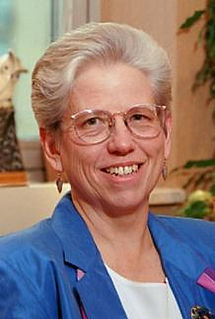Evolving Magazine
A Guide for Conscious Living since 2009

JOURNEY TO WHOLENESS - September 2016 - Kansas City
The Safe Place is the Sacred Space-Find It!
By Jude LaClaire, Ph.D.
When I ask people about their safe place many describe a place outdoors by a stream, the ocean, or in a wood or meadow. Often it is a place they have visited at one time in their lives or a place they can visit often. People make pilgrimages to special places to pray, to be inspired, to touch the spiritual in the special physical space.
In my life I have found special places in the environment that feel special, safe and, often, sacred. I have been on pilgrimages as well. I will be visiting some of these places as you may be reading this. I will be in Colorado, in the Grand Teton National Park, Yellowstone Park and Mount Rushmore. Most of these places are special to me and some will be a first time visit. However we are not always able to travel to these special places in nature. So, what can we do to find the safe place that may become our sacred space?
Since the brain is a marvelous organ that is versatile and flexible, it offers us a viable free alternative. When a sensory experience is registered the message travels through neural pathways to different centers of the brain. The amazing thing is that when we imagine this experience, the images travel the same neural pathways, lighting up the same parts of the brain as when we actually have the experience. Imagining something is very nearly as good as being there.
With traumatic memories, this is not a good experience, and we work to release those memories. However, we can recall or create pleasant experiences by using our imagination. So, even if you cannot travel to your physical safe place, you can get there via your imagination. This is a very reasonably priced trip!
How can we do this? The brain is designed cyclically to go to the brain rhythm associated with imagery, dreams, meditation or hypnosis, called alpha-theta brain wave state. The Ultradian rhythm of the brain is the ninety to one hundred twenty-minute brain cycle. Once curing this cycle we got into the alpha-theta BW cycle. Ernest Ross, Ph.D. in The 20 Minute Break: Using the New Science of Ultradian Rhythms calls this twenty-minute period “The Ultradian Healing Response.” This is the time to find a place in which we feel safe and can create the sacred place. The recent popularity of mindfulness meditation is a tool, among many others, to help us find the sacred within ourselves.
We frequently disrupt this cycle with stimulating substances like caffeine, sugar or nicotine or we override it with activities. This can not only have very negative short-term and long-term effects on our physical and mental health but it can deprive us of this wonderful cycle in which we can naturally find the safe place and create the sacred experience.
Let me suggest that you find a time once or twice a day to take this 20-minute break. Taking deep diaphragmatic breaths, breathing out twice as long as you breathe in, will take you to this BW state. If you do not have a structured mode of imagery or meditation, there are many guided imagery sessions available free online or that can be purchased. I usually give people a CD of guided imagery sessions that I created to help them find the safe place. There are also many books on the topic of guided imagery and mindfulness meditation that are helpful.
Hopefully, with practice, you will find yourself taking the deep breath throughout the day, even when you cannot take twenty minutes, to pause, self-calm and go to your safe place and sacred space. You will discover that finding the safe, calm space internally connects you with the eternal now moment, the spiritual center of Life. Make the internal trip often and you will find yourself energized, refreshed and feeling so much better for taking the break.
Evolving Magazine
Kansas City



Click to Read the Full
Kansas City Edition!
Click to Read the Full
Santa Fe Edition!

Jude LaClaire, Ph.D., LCPC, is a counselor, educator and author. For counseling appointments, seminars, training, speaking engagements or information on Neurobehavioral Programs or Imago Couple therapy call 913-322-5622. For more information about Jude LaClaire or the Kansas City Holistic Centre go to

